The Salton Sea Facility for Climate Research is a combined research space and educational/community center near the Salton Sea, which supports dust research led by UCSD climate scientists and serves as a didactic tool for illustrating the rapidly changing climate of the region. This project was carried out by SL Collective alongside Scripps scientists. The project addresses our understanding of how human settlement and global migration are influenced by climate change. It explores what material and conceptual infrastructures can render climate legible, knowable, and actionable, and what the spatial implications of those infrastructures are.
Project Team: Gillian Shaffer Lutsko, Ruchi Singhania, Florian Lepinard, Chinmayi Suri
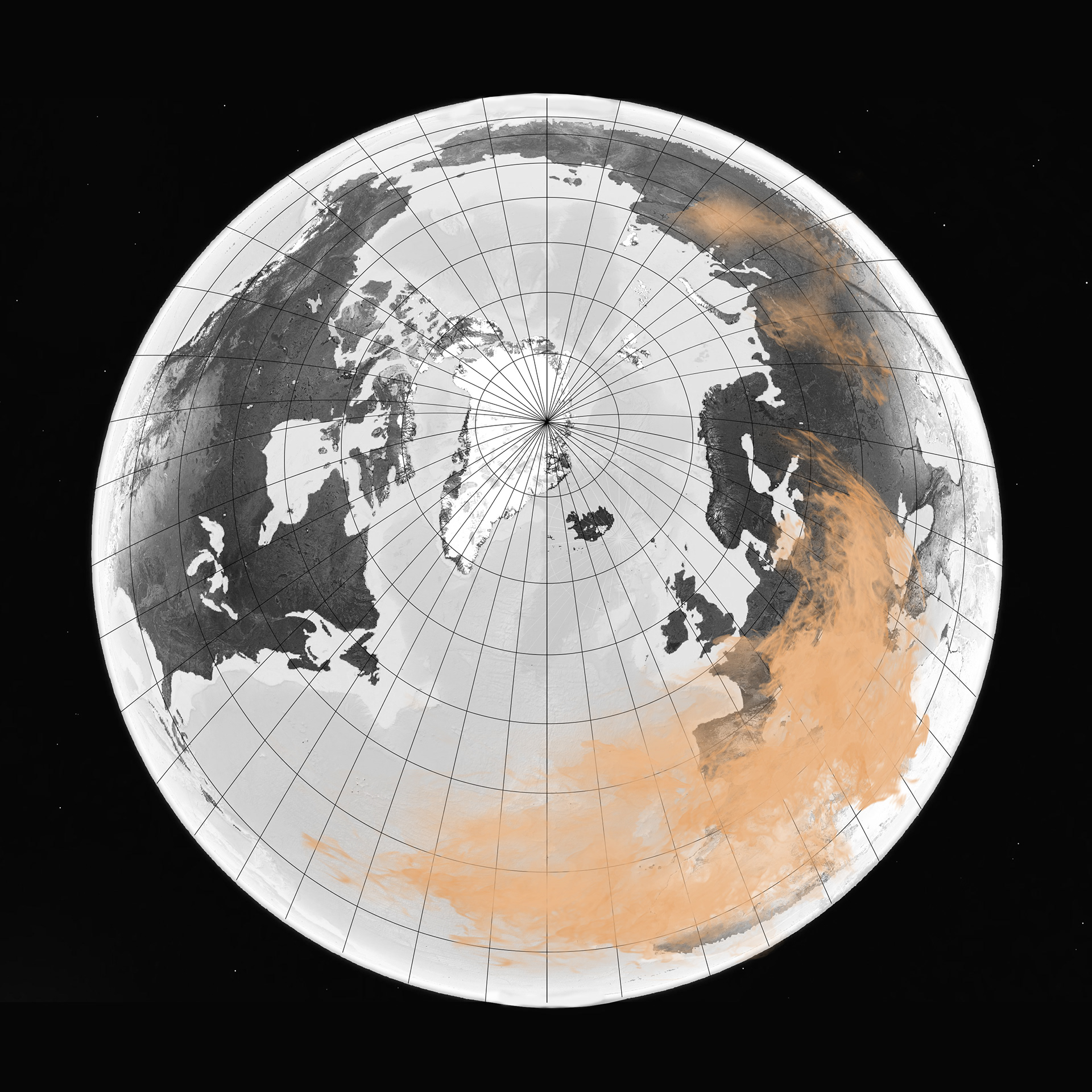
SLC -Global dust scale

SLC - Micro dust scale
The Salton Sea is characterized by its sinking waters and resulting dust storms. The project's story of dust is marked by creating an architectural intervention. Wind patterns carry dust from the Sahara Desert to fertilize the Amazon Rainforest. The microscopic dust particles can be perceived as such but are also perceivable on a larger global scale. Similarly, the warm winds that travel over the shrinking Salton Sea create currents that kick up the left-behind dust resulting in widespread dust storms. The proposal analyses the wind patterns in the Salton Sea to predict dust storm patterns. The architectural intervention is situated and the massing is designed to provide shelter for the scientists during storms and be a focal point for dust to accumulate and be studied.

SLC -Site map
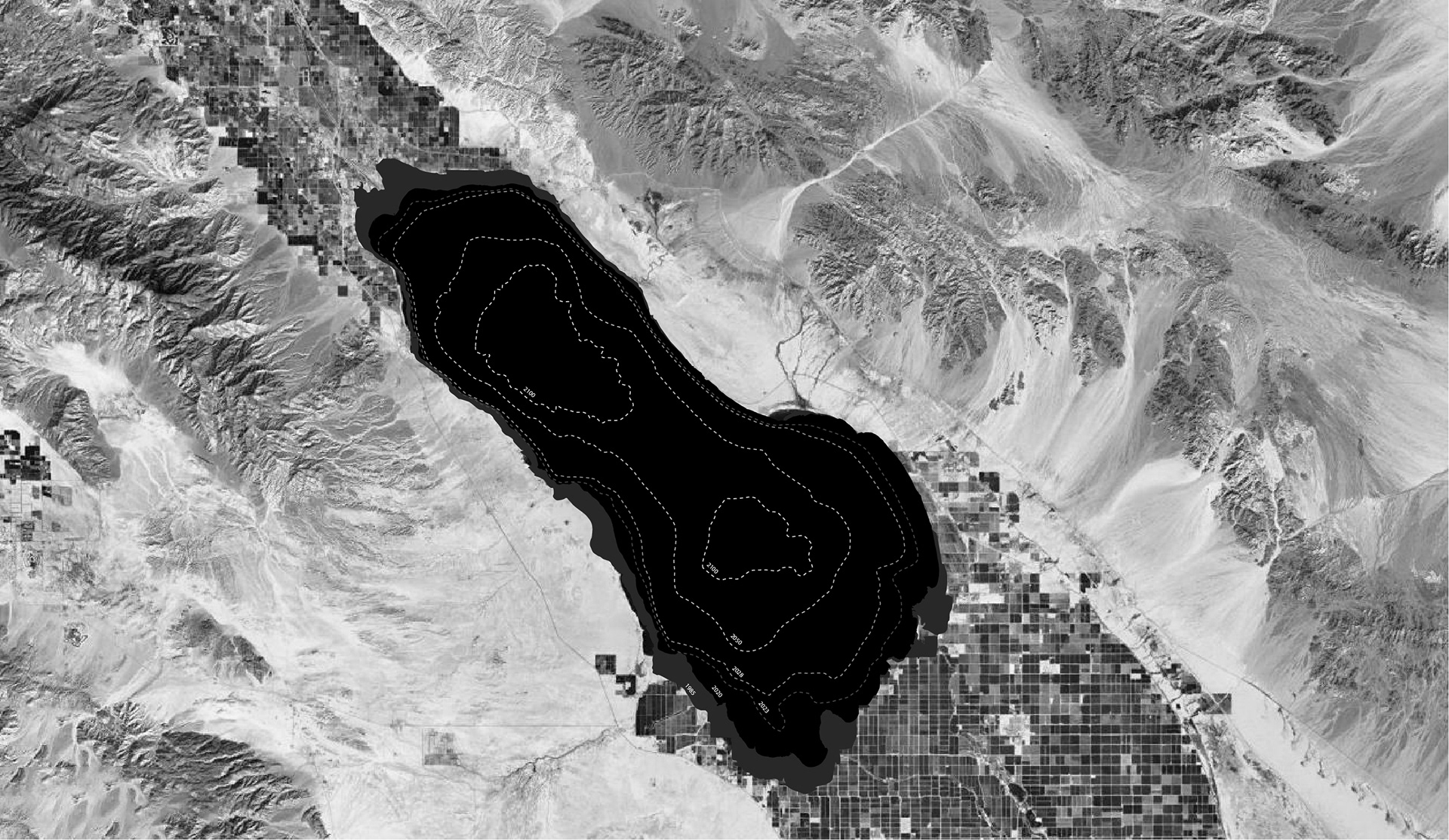
SLC -Shrinking seas
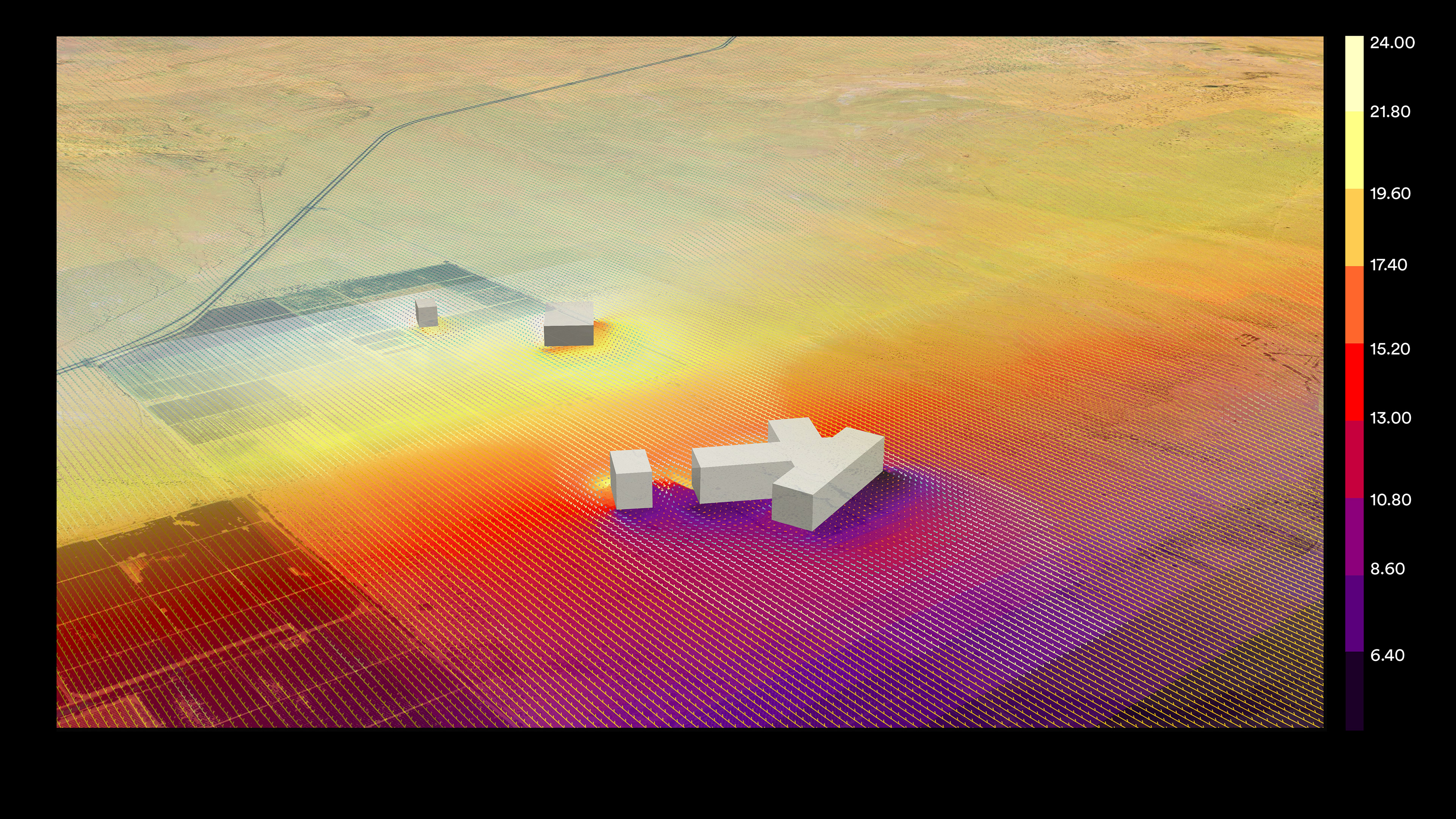
SLC -Wind mapping around the structure
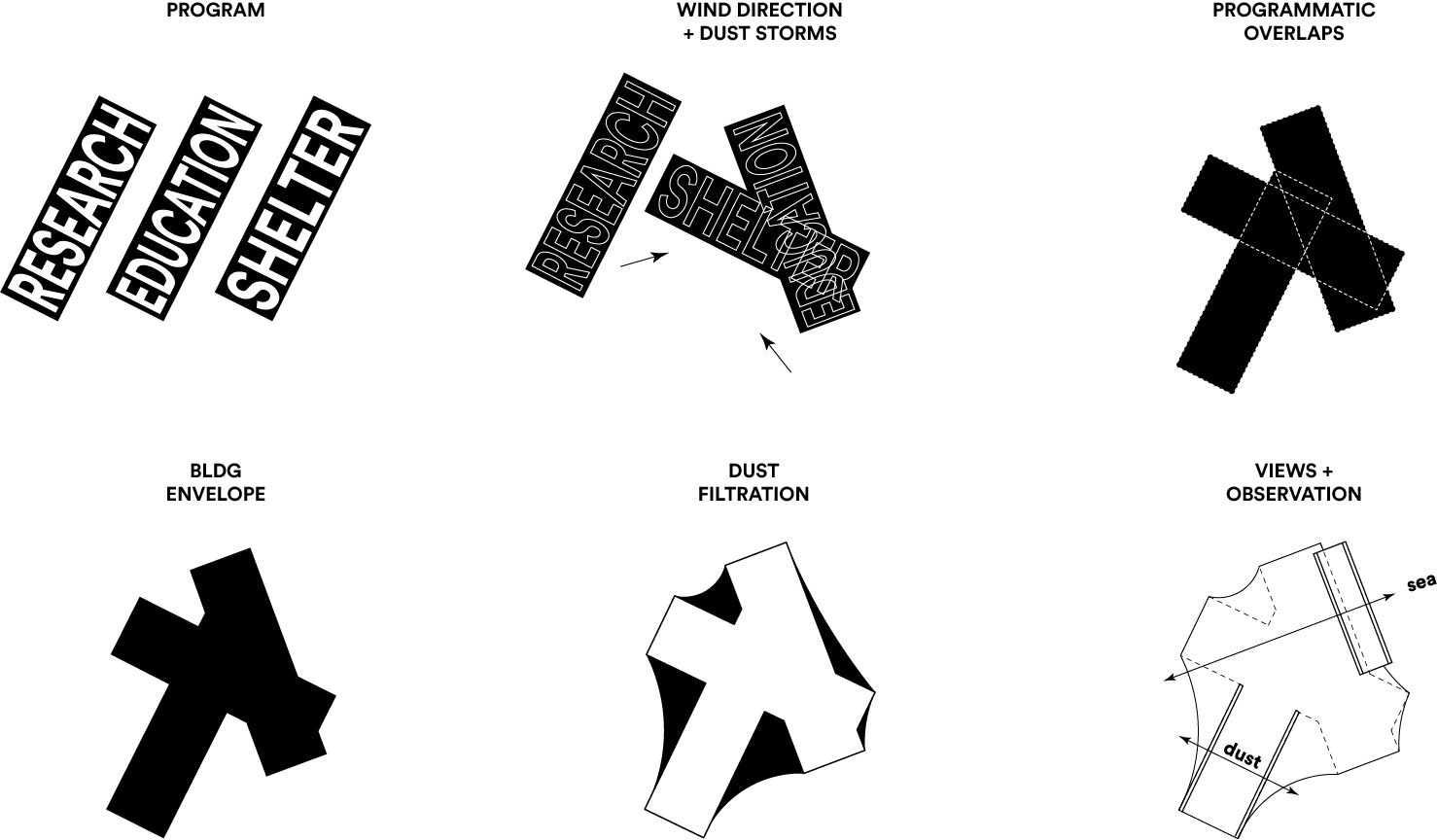
SLC -Building plan studies

SLC - Stratigraphy section
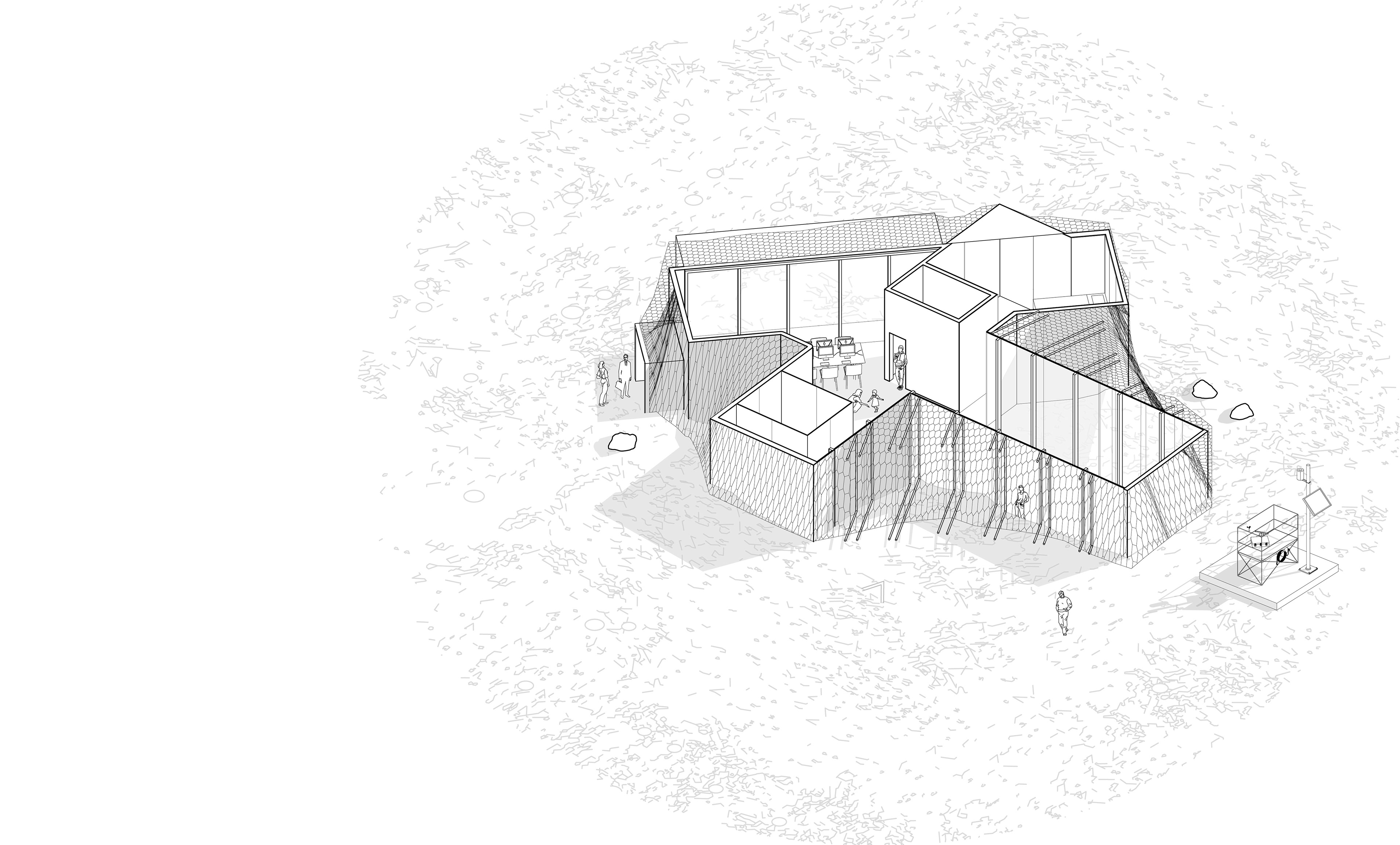
SLC -Intervention
Three programs are arranged based on the simulated directions and dust storms that overlap to form functional spaces.
A permeable membrane filters dust, isolating it from detritus (organic matter, trash, etc.), and forming a stratigraphy that acts as a physical embodiment of environmental change, rendering the invisible concept of climate change visible. The intervention becomes a monument in the desert as a record of time and change.
In this way, the project is at the intersection of multiple time scales: the time scales of the humans who observe the dust, the time scale of the building that transitions from inhabitation to a data record, and the time scale of environmental change, which will continue even after rising dust levels render the Salton Sea unlivable.
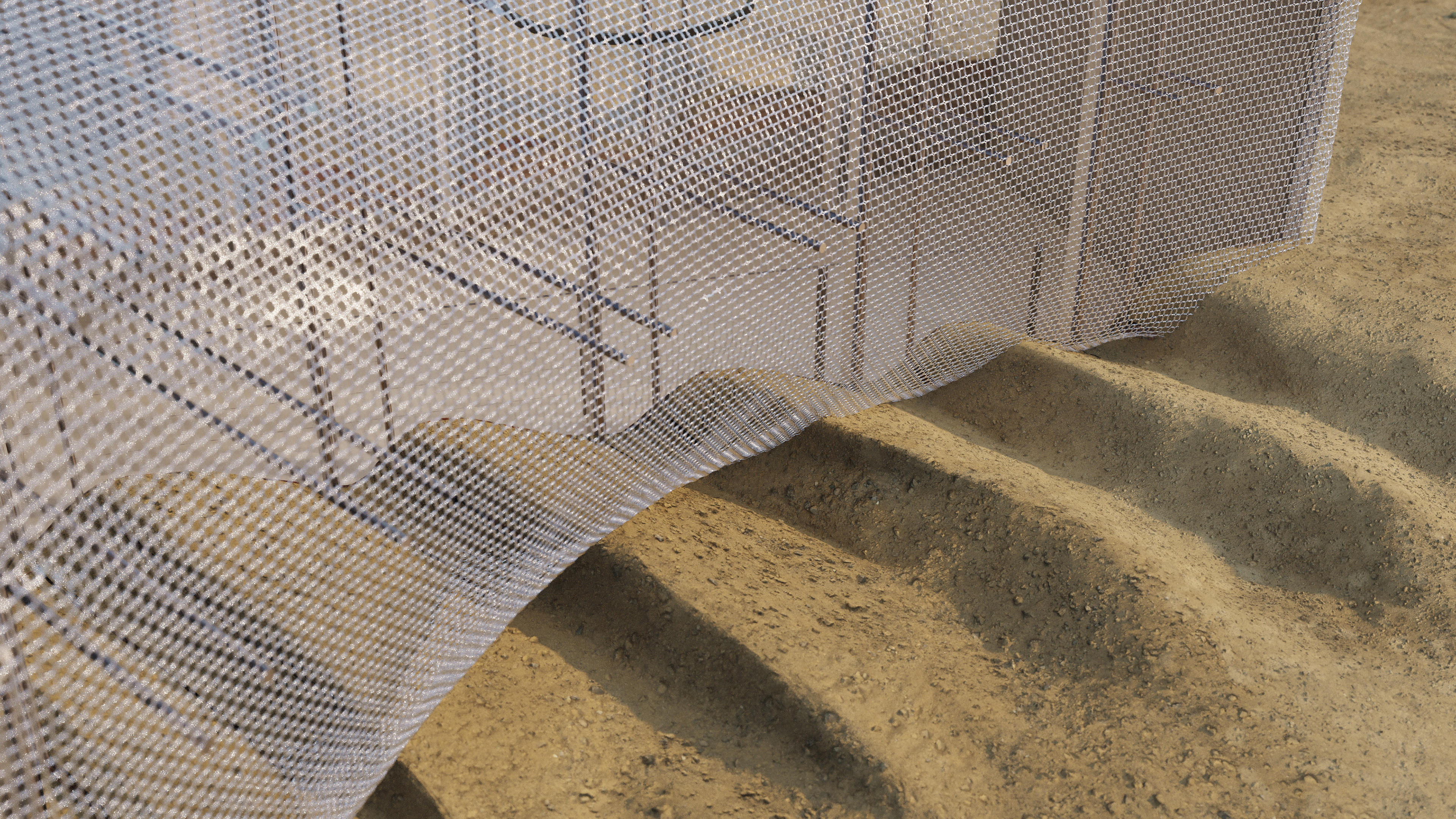
A record of dust

SLC -Exterior
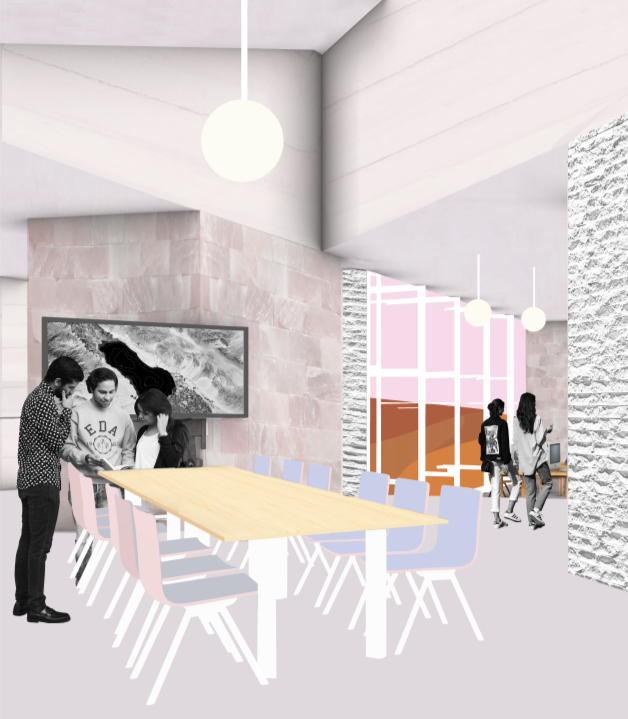
SLC - Interior
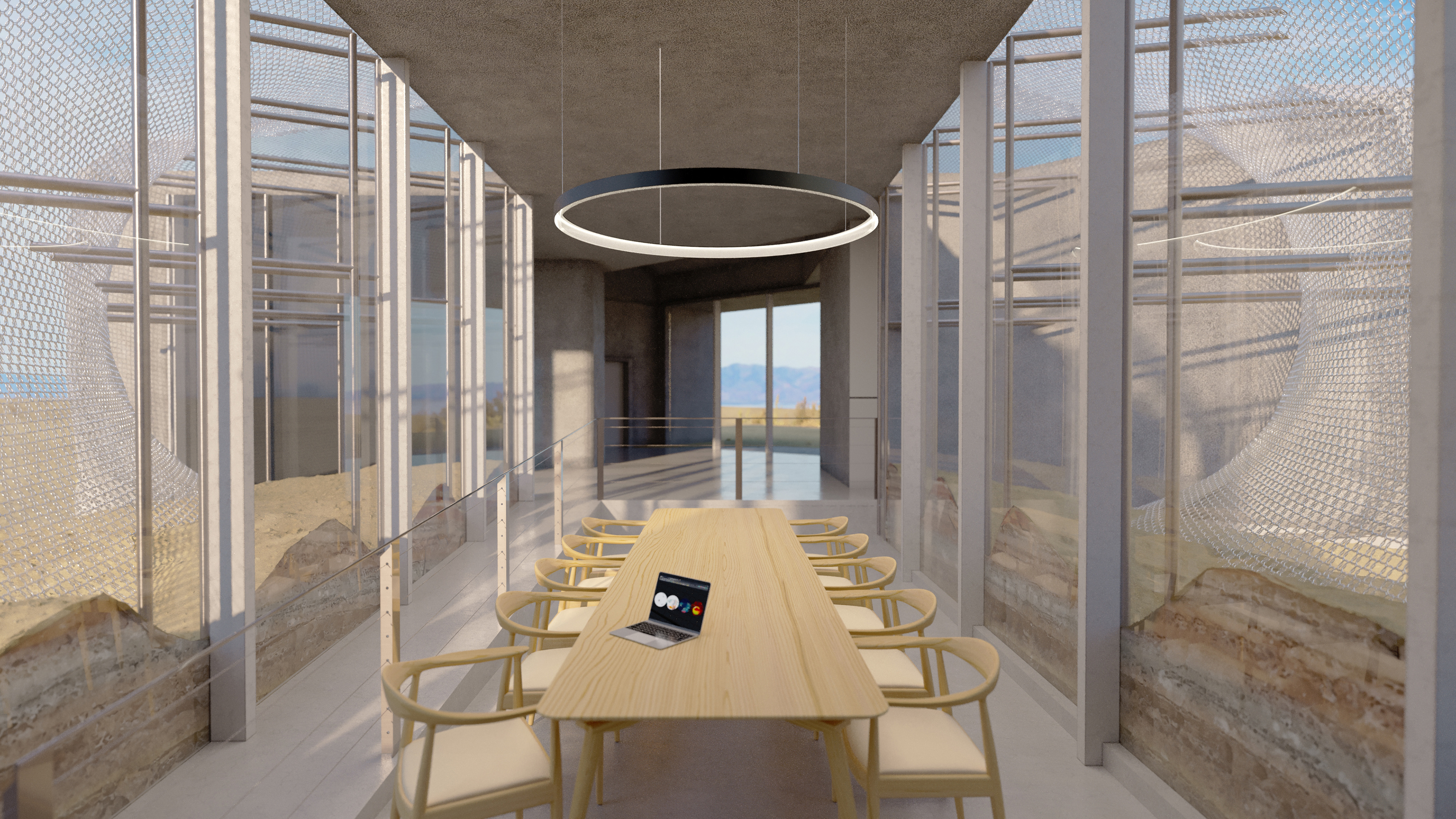
Stratigraphy
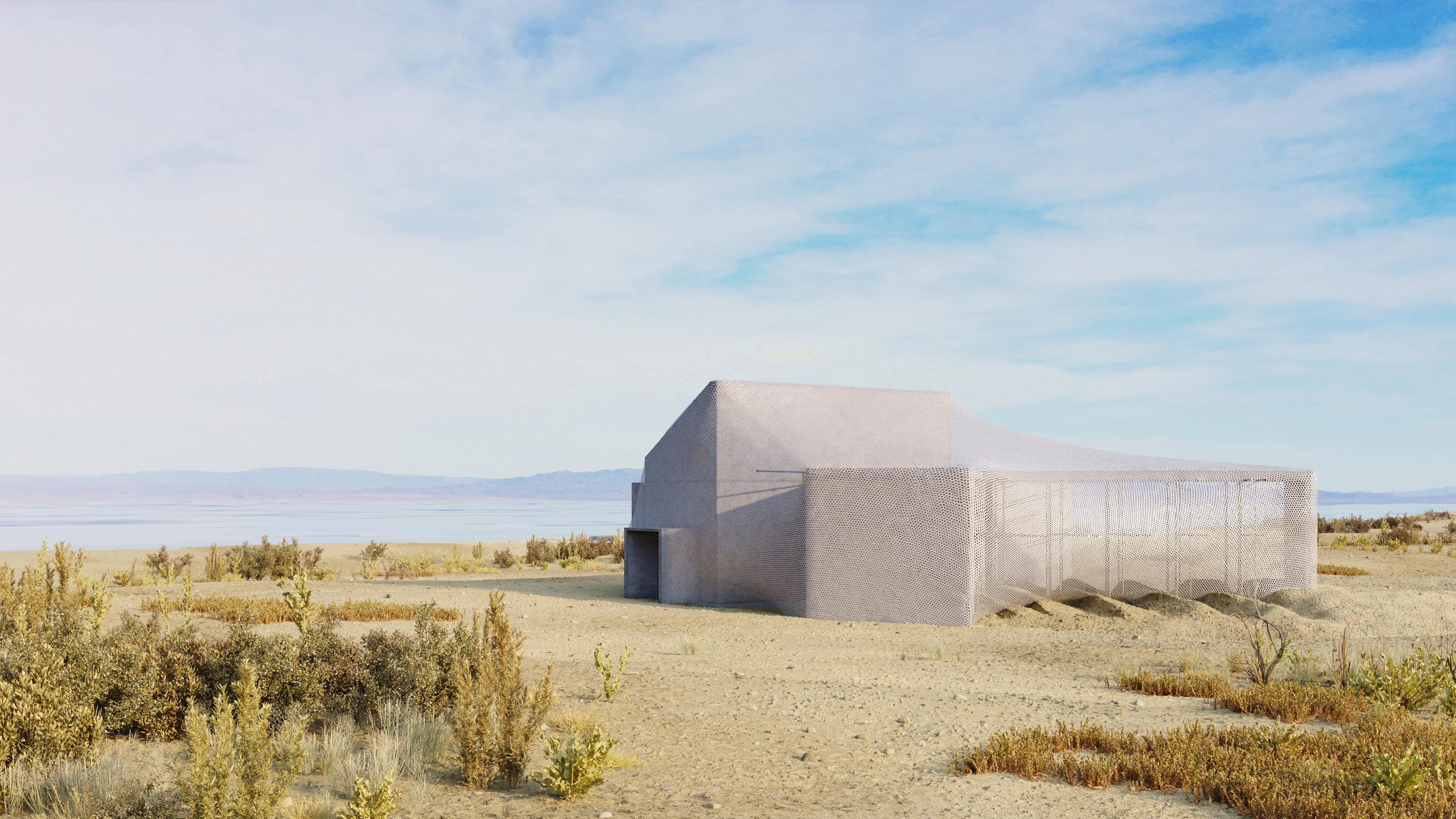
Vision 2050
